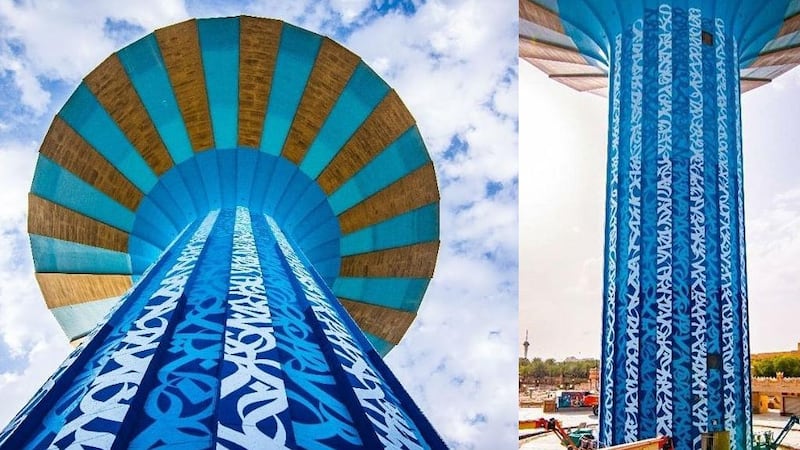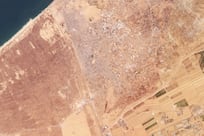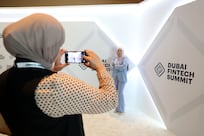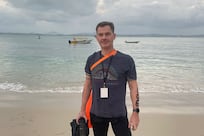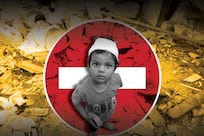'Calligrafiti' artist el Seed has just unveiled his latest project: a water tower in Riyadh, Saudi Arabia.
The project, which has been in process for months, has just been completed: elSeed says his team will be back in Nobember to finish off an element of the work.
elSeed tends to paint decipherable, site-specific Arabic script on the public structures he works on - for this project he chose the words of Bedouin poet Abdallah ad-Dindan, who was of the Duwasir tribe in the southern Najd region of KSA.
"He was old, poor, and illiterate, yet he held a magnificent wealth of poetry inside his mind and he is one of the best examples of the treasured tradition of Arabian oral poetry," the artist wrote on his Instagram of the choice. "His humble way of life embodies the true down-to-earth spirit of a Bedouin. My role as an artist is to change stereotypes, so, by focusing on this poet, I believe I will be highlighting a part of Saudi culture that is less celebrated."
ad-Dindan's full name was Abdallah ibn Muhammad ibn Hzayyim of the Hararsah, but his more common name, ad-Dindan was taken from the verb dandan, or to 'hum a tune or break into verse'. He tragically died in 1998 when his tent caught fire, according to the book Oral poetry and narratives from Central Arabia.
Click the arrows to see more pictures of the work:
"Today, the words of an illiterate man stand proud and unforgotten on one of the city's most monumental structures," el Seed added.
The specific poem that is scrawled across the water tower in el Seed's signature blue hue is a 27-verse plea for rain after a period of drought: it's featured in Marcel Kurpershoek's anthology Oral Poetry and Narratives from Central Arabia: Poetry of ad-Dindan, a Bedouin Bard in Southern Najd.
The book is a collection of the Bedouin's poetry - with transcriptions and translations taken from taped recordings.
The artist said that the curved nature of the structure was a challenge: "It is the kind of wall that is hard to tame. The shape of it is intimidating. The first day, when I went on the lift, the wall felt like a wave about to come crashing down on me."
The Riyadh project is a collaboration between the artist and the Saudi Arabian Ministry of Culture, and many Saudi artists helped him with the work:
Last month, el Seed spoke to us about why he chooses to work predominantly with Arabic script: "Arabic script has a universal beauty. It's cool to use a script that has so many stereotypes around it as a tool to bring people together. I think it's a way to give the script back its real value." Read more about the words and stories behind some of his key projects here.
